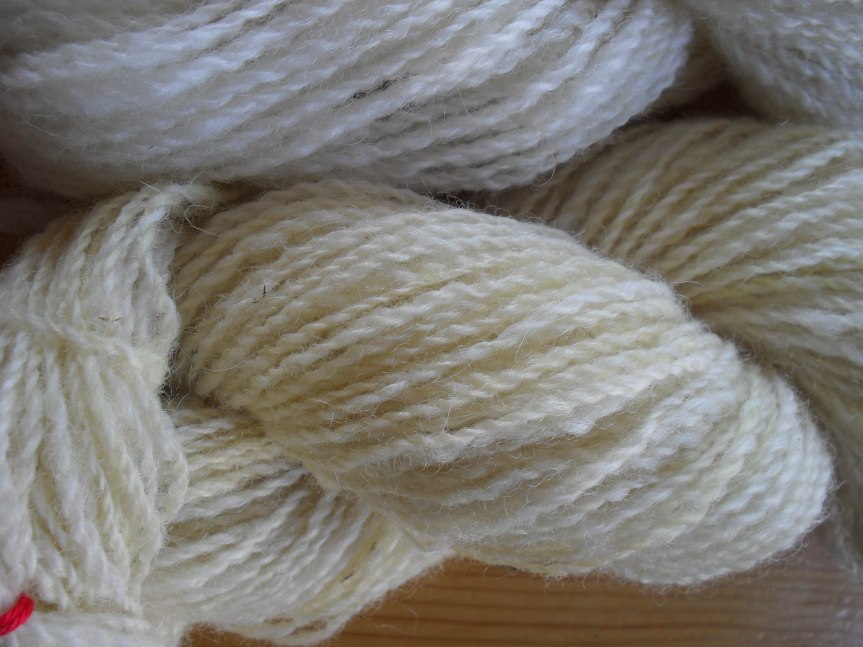La oveja Assaf es una raza bastante nueva que se formó cruzando las razas Awassi, una raza que pertenece a un grupo de ovejas con colas gordas de grasa, y East Friesian Milksheep. Las Awassi se crían en el norte de África y en el Oriente Medio, por ejemplo. Las East Friesian Milksheep de Frisia que está en la costa del Mar del Norte que hoy en día pertenece a Holanda y Alemania. Los israelitas desarrollaban una raza nueva para mejorar la producción de la carne y de la leche. Algunos pastores vascos introducieron esa raza para ampliar la producción de la leche también pero se confrontaron con los defendedores del queso Idiazabal que sólo permite el uso de la leche de las Latxa o de las Carranzanas. Así que no se puede llamar el queso hecho con la leche de las Assaf ‘Idiazabal’. Se dice que es una raza de doble rendimiento: carne y leche. Pero creo que también se puede usar la lana de esa raza:
Aquí se ve los rizos sucios y limpios: en la tercera foto podéis ver unos rizos muy blancos: de éstos había cortado las puntas porque estaban muy sucias y apelmazadas.
Above you can see the dirty and clean locks: in the third photo the last locks are very white: I had cut off the tips of these because they were very dirty and felted.
The Assaf sheep are a very young breed that was developed by Israelites in the 1950’s/60’s by crossing the Awassi sheep and the East Friesian Milksheep. The Awassi belong to the fat-tailed sheep group that is very common in the Middle East, in the north of Africa and Iran, Afghanistan, Pakistan etc. The East Friesian Milksheep comes from Friesia (surprise!) which are regions along the coast of the North Sea that nowadays belong to the Netherlands and Germany. The Israelites wanted to create a better breed for their meat and milk production. Some Basque shepherds also introduced these sheep to the Basque Country but they met strong reservations against the milk of the Assaf being used to make the Idiazabal. So, to maintain the certificate of origin of the Idiazabal, the producer has to use the milk of the Latxa or the Carranzana. So the cheese made of the Assaf milk cannot be called Idiazabal (but may also taste very good, of course.) The Assaf are said to be a double-purpose breed: meat and milk. But I think that you can also use their wool. (See the photos above.)

I really liked spinning this sample: it reminded me of some English Leicester Longwool locks that I had from New Zealand, only about half the length. The yarn is not next to skin soft but suitable for hats, mittens or socks, in my opinion.
Me gustó mucho hilar esta prueba: me acordaba de una muestra de lana de English Leicester Longwool que tenía de Nueva Zelanda, solo que tenía la mitad de la longitud. La lana no es muy suave, por ejemplo para llevar una bufanda en el cuello, pero sí suficiente suave para hacer un gorro, mitones, o calcetines.

















